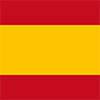A Cierva C.4 autogyro is presented in Spain: it will fly a century after its first flight
Spain has been a pioneer country in many areas, including aviation. The centenary of one of its aeronautical milestones has recently been completed.
On January 17, 1923, the engineer and aviator Juan de la Cierva y Codorníu (1895-1936) finally saw his dream come true: his Cierva C.4 autogyro (which we can see below these lines) , the fourth he built, finally managed to fly at the Getafe aerodrome (Madrid), making a "jump" of 183 meters and becoming the first rotary-wing aircraft in the world that managed to fly, 11 months before the 20th anniversary of the first fixed-wing flight of the Wright brothers on December 17, 1903.

The pilot who made that historic flight of the first gyroplane, Captain Alejandro Gómez Spencer (1896-1984), went down in history as the first aviator to fly a rotary-winged aircraft. Unfortunately, even in our country he is a great unknown. At the end of January 1923, the Cierva C.4 made a longer flight, covering a 3.5-kilometre circuit for 4 minutes at a flight height of 30 meters, also at the Getafe aerodrome.

Yesterday, the Air Force hosted the presentation at the Getafe Air Base of a replica of the Cierva C.4 autogyro, which has been built by Colonel Fernando Roselló, of the Air Force, together with a group of professionals belonging to the Club de Ultraligeros Getafe. It is a replica to which "the last technical and legal touches are being given to put it on the air and that they wanted to present yesterday at the same Getafe Air Base, where they were based the lands of the old Santa Quiteria pasture". The event was carried out with the collaboration of the Getafe City Council and the Spanish Air Force. Both institutions were represented by the mayoress of Getafe, Sara Hernández, and the director of the Institute of Aeronautical History and Culture, Brigadier General Jorge Clavero Mañueco.

According to the Spanish Air Force, during the presentation, three of the people most involved in this project, Colonel Roselló himself and the aeronautical engineers Pedro Nogueroles and Juan Manuel Arco, told the attendees the history of the autogyro and explained the design and construction process of the C.4 replica, before everyone could see it in the hangar of the CASA C-295 of Wing 35.

The Air Force has indicated that the new C.4 "is almost finished. In a very short time we will see it fly through the skies of Getafe, thus putting the final touch on this dream of some few lovers of aeronautics". We will be waiting for that moment.
+ UPDATED 1-20-2022 10:47 p.m.: The communication office of the Spanish Air has contacted Defensa y Aviación to clarify the information initially published in this post. They tell me that the gyroplane will not be operated by the Air Force, but by the Club de Ultraligeros Getafe.
---
Photos: Ejército del Aire / Academia de las Ciencias y las Artes Militares.
|
Don't miss the news and content that interest you. Receive the free daily newsletter in your email: |
- Most read
- The 'hole' without civil flights around Paris during the opening of the Olympic Games
- Stunning footage of the F-15QA Ababil in flight recorded from its cockpit
- The firearms used by the Pontifical Swiss Guard, the smallest army in the world
- The most distant deployment of the Spanish Air Force in Australia and New Zealand
- Eurofighter vs F-35: the opinions of professional pilots on these advanced fighters
- The first photo of an F-16 fighter with Ukrainian insignia and the details it has revealed
- This is the driver station of an M1 Abrams tank and the impressive start of its engine

 ES
ES







Opina sobre esta entrada: